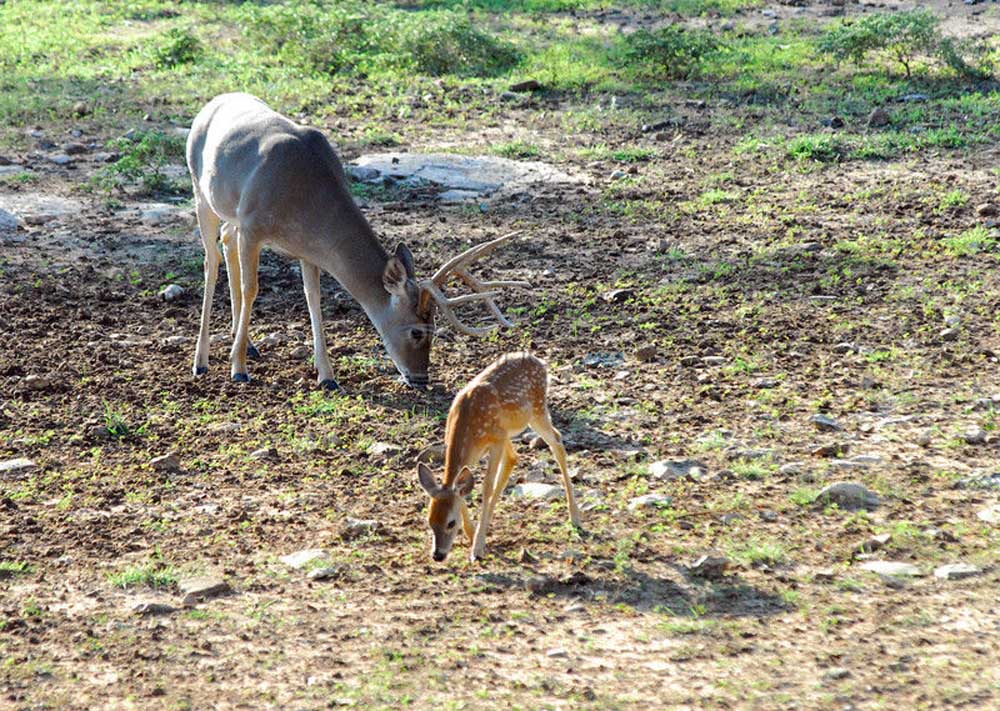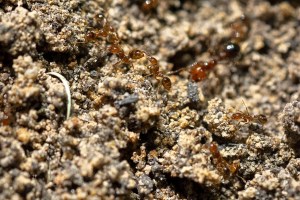Telling a deer’s age may take more than just looking at the antlers
Published 7:52 pm Saturday, November 8, 2014
It was definitely a case of misidentification. A Texas Parks and Wildlife Department biologist looked at the two Hill Country doe lying on the locker floor. One was noticeably larger than the other. Based just on appearance he guessed one to be 2 ᄑ years old and the other 3 ᄑ.
After pulling a jaw bone and aging the deer based on dental wear he found out he was right, except that the bigger of the two was actually the younger deer.
Trending
Welcome to the aftermath of the worst of the recent drought years in Texas, 2011. Edwards Plateau hunters attempting to manage their harvest by taking mature bucks and does may be in for a surprise this season.
Rufus Stephens, Texas Parks and Wildlife Department Wildlife District Leader for the Edwards Plateau, said this size reversal could create a long-lasting problem for the region with regards to bucks.
“It is going to take some real resistance from the hunter to say that is a younger deer, I am going to let it walk,” Stephens said of the current phenomenon.
Statewide there was a lack of a fawn crop in 2011. This has resulted in the lack of 3ᄑ-year-old bucks and does this year. It is a situation that is especially pronounced in the Hill Country and South Texas where the impact of the drought was at its worse.
While it is possibly only parts of the Hill Country could see 2ᄑ year old deer bigger than the 3ᄑs there is concern.
“Overharvest of 2ᄑs is going to be reflective next year in the lack of 3ᄑs,” Stephens noted.
Trending
He added that would create a domino effect among mature bucks that could take several years to overcome because this year’s already limited age-class of 3 ᄑs would be an even smaller class of 4ᄑs. Those that are already 4ᄑ and 5ᄑ also came from reduced fawn crops, and have had to run the hunting season gauntlet for numerous years already. Adding hunting pressure to natural mortality and those older age class deer numbers are dwindling.
“What we think we will see this year will be a jump in 2ᄑ- and 3ᄑ-year-old harvest and a decrease in 4ᄑ and 5ᄑ, but there are not that many 3ᄑs and that is going to put more pressure on the 2ᄑs. That is what is going to create that gap in the future,” Stephens said.
Looking back, Stephens said fawn production in 2008-09 was almost as bad as 2011. The next year, 2009-10 was slightly improved, but nowhere close to a bumper crop. In 2010-11 the Plateau got rain and the region’s fawn production was back up, only to drop to near-nothing the next year.
Since 2010-11 numbers have improved yearly to the point there was a bumper crop fawn survival this year.
Those deer, however, are several years away from being mature.
The flip-flop in size and quality could make binoculars especially important this year. Not a big fan of using body characteristics to determine a deer’s age, Stephens said hunters should use other keys in determining if the buck is mature.
“At least use some of the basic antler characteristic like wider inside spread and more points. You can tell more about a deer’s age from that than you can from body size, neck and wrinkles,” he said.
Stephens added the 13-inch inside spread antler restriction required in some counties in the state is also a good rule of thumb in determing age.
If there ever was a year to take a good long look at a Hill Country buck, this is it.
“A hunter in the blind needs to be more cautious in judging deer. If you have a question, you might want to let it walk,” Stephens said.
Have a comment or opinion on this? Email Steve Knight at outdoor@tylerpaper.com, follow him on Facebook at TylerPaper Outdoors and on Twitter @tyleroutdoor.






